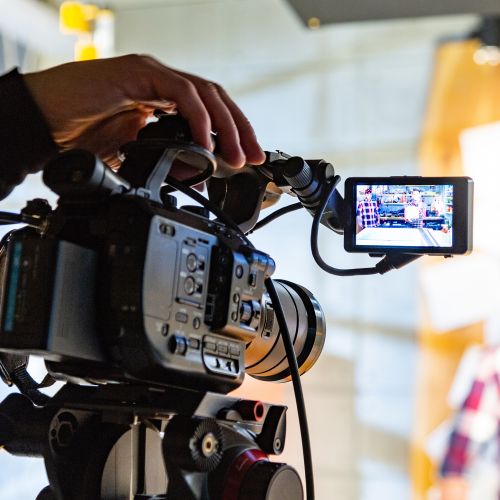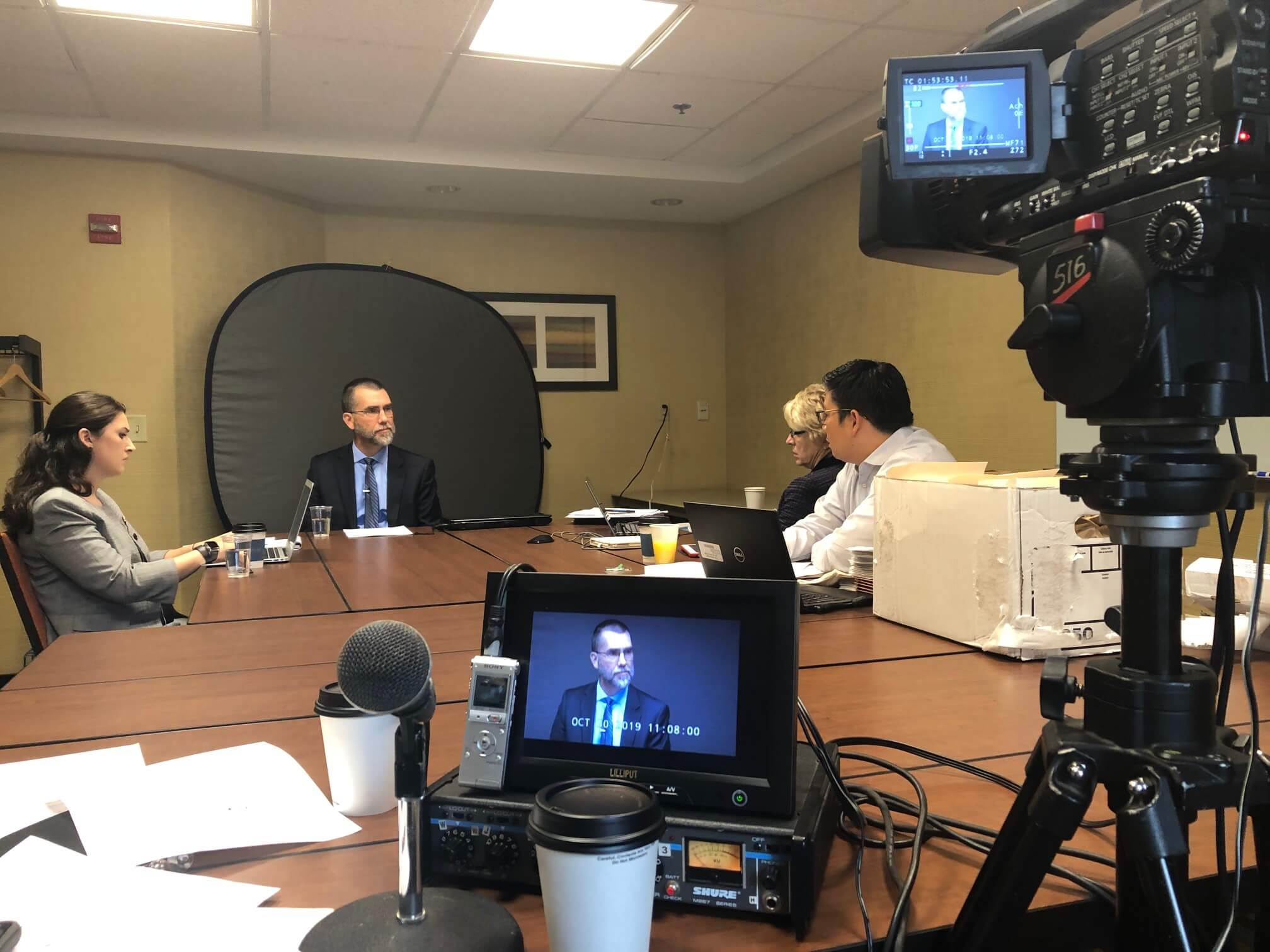The Ultimate Overview to Legal Videography for Lawyer and Legal Teams
Wiki Article
Looking Into the Systems of Lawful Videography: Unveiling Its Operation in Safeguarding Authentic Aesthetic Testament for Judicial Procedures
In the realm of judicial process, the duty of lawful videography stands as a keystone in maintaining and providing visual evidence. As modern technology proceeds to breakthrough, the devices behind legal videography have become increasingly intricate, offering a critical layer of credibility to statements caught on video. By delving into the operational complexities of legal videography, one can uncover the meticulous processes that guard the integrity of visual proof offered in courts - Legal Videography. This expedition not just drops light on the historical advancement of lawful videography but likewise hints at the future patterns that might better change exactly how aesthetic statements are upheld in the world of justice.Historic Advancement of Lawful Videography
Checking out the historic progression of lawful videography exposes a considerable makeover in the catching and presentation of visual evidence within the lawful landscape. In the past, lawful proceedings heavily counted on created photographs and transcripts to record occasions and provide evidence. Nevertheless, with the arrival of video technology, the lawful industry witnessed a standard shift in exactly how visual testimony was captured and offered.The development of lawful videography can be traced back to the late 20th century when innovations in video recording equipment made it more available for usage in courts. This technical innovation not just boosted the precision and integrity of aesthetic evidence but also transformed the way cases were presented to courts and judges (Legal Videography). Attorneys began to recognize the influential power of video clip recordings in sharing feelings, subtleties, and non-verbal hints that written transcripts or photographs alone can not record properly

Modern Technology Innovations in Video Clip Paperwork
What key technical developments have transformed video clip documentation in the legal area? The legal field has actually seen considerable developments in video clip documentation modern technology that have boosted the authenticity and integrity of visual evidence in judicial process.Furthermore, advancements in video security and watermarking technologies have actually strengthened the security and tamper-proof nature of video proof, guarding it against unapproved modifications or tampering. The advent of cloud storage space options and remote gain access to capacities has streamlined the storage space, retrieval, and sharing of video proof, promoting smooth cooperation amongst legal experts and making sure efficient accessibility to vital visual statements when needed. These technological advancements in video clip documents have undoubtedly reinvented the lawful area, boosting the precision, reliability, and admissibility of aesthetic evidence in judicial procedures.
Function of Lawful Videographers in Court Room Settings
The evolution of video clip documents innovation in the lawful field has required a critical role for legal videographers in courtroom settings, ensuring the honesty and reliability of aesthetic testimonies provided throughout judicial procedures. Legal videographers play an essential duty in recording and maintaining accurate visual proof that can be essential in court instances. Their responsibility reaches establishing devices, videotaping process, and generating premium video clips that precisely reflect the events in the court.
Additionally, lawful videographers frequently work closely with legal groups to make sure that the video proof aligns with the case's requirements and can be efficiently offered in court to sustain the legal debates being made. Generally, the duty of legal videographers in courtroom settings is important in promoting the principles of justice and making certain the transparency of legal procedures. Legal Videography.

Ensuring Admissibility and Integrity of Video Proof
To keep the reputation of visual evidence provided in legal procedures, guaranteeing the admissibility and integrity you can look here of video clip proof is an important duty for legal videographers. Admissibility describes the approval of look at this now evidence by the court, and for video proof to be permissible, it must satisfy specific requirements. Lawful videographers play a critical role in making certain that the video clips they capture abide by the regulations of evidence, such as integrity, importance, and credibility.Stability of video proof involves keeping the creativity and accuracy of the video from the moment it is videotaped until it is offered in court. This includes securely keeping the video clip documents, recording the chain of wardship, and stopping any type of tampering or modifications. Lawful videographers should comply with rigorous protocols to assure the honesty of the video proof and avoid any obstacles to its authenticity.
Future Trends in Legal Videography
Provided the enhancing reliance on modern technology in lawful process, lawful videographers are positioned to welcome innovative improvements forming the future of aesthetic statement capture and discussion. One of the popular patterns on the perspective is the integration of digital truth (VIRTUAL REALITY) and boosted truth (AR) modern technologies right into lawful videography. These technologies have the potential to change exactly how aesthetic evidence exists in courtrooms, permitting courts and courts to submerse themselves in the scene of the criminal offense or event.Furthermore, the use of artificial knowledge (AI) formulas for video clip analysis is anticipated to simplify the procedure of reviewing and examining big quantities of video footage. AI can aid in recognizing key moments, anomalies, and patterns within videos, improving the effectiveness of lawful examinations.

Final Thought
To conclude, lawful videography has actually played Our site a critical function in providing authentic aesthetic evidence for judicial procedures. Through technological innovations and the know-how of legal videographers, the stability and admissibility of video clip evidence are made sure in court room settings. As lawful videography continues to develop, it will certainly be necessary to maintain standards that preserve the precision and integrity of visual statement for the future of lawful proceedings.Checking out the historic progression of legal videography reveals a considerable transformation in the recording and presentation of visual proof within the lawful landscape.The advancement of video clip documentation innovation in the lawful area has actually necessitated a vital duty for legal videographers in courtroom settings, making sure the honesty and integrity of visual testimonies provided during judicial procedures. Furthermore, lawful videographers usually function closely with lawful teams to ensure that the video clip proof straightens with the instance's needs and can be effectively presented in court to support the legal arguments being made.To maintain the reliability of visual evidence provided in legal proceedings, guaranteeing the admissibility and integrity of video proof is a critical responsibility for legal videographers. As legal videography continues to evolve, it will be important to support requirements that keep the precision and dependability of visual testimony for the future of legal process.
Report this wiki page